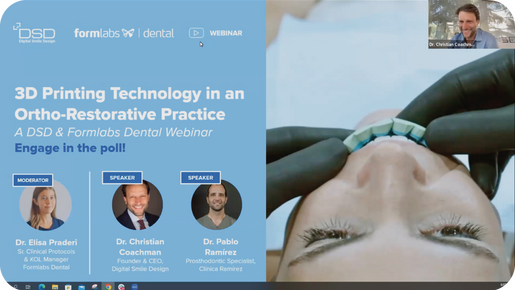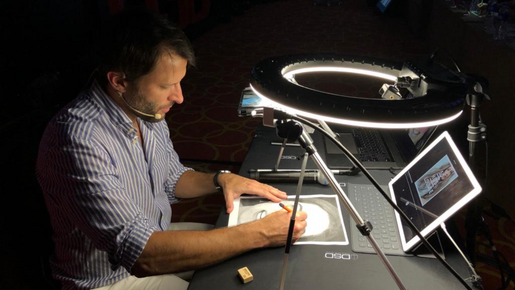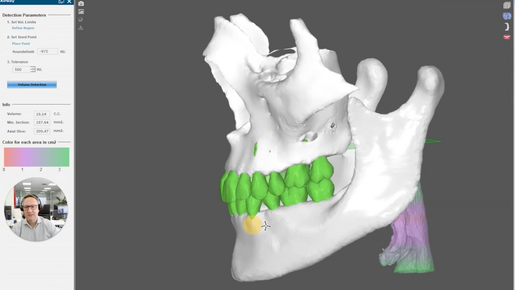
By Digital Smile Design
⋅ min read
⋅ Updated Oct, 2023

Dental clinic owners are inundated with advertising from dental technology companies more than ever before. It can be a challenge to decide which equipment and brands to invest in, when many require a learning phase before being fully implemented. A question we often hear from DSD course participants is: ‘What should I buy first, an intraoral scanner or a 3D printer?’
In a recent webinar with Formlabs Dental, we addressed this topic head on: DSD Founder Christian Coachman sat down with DSD Clinic owner, Dr Pablo Ramirez, to share his tried and tested insights as an early adopter of digital dentistry technology. Here we break down their recommendations for which tool to take advantage of first in your dental practice.
If you want to get started tomorrow with digital labs
Dr Pablo Ramirez believes if you want to get started tomorrow with digital labs and take advantage of their benefits, investing in an intraoral scanner should be your first priority. Digital labs require dentists to submit digital impressions of patients’ teeth, and they often do not work with dentists who don’t have scanners. This means that even if you have a 3D printer, without an intraoral scanner, you may miss out on the opportunity to collaborate with digital labs.
“You can do regular impressions and then have your lab scan the files, but as the owner of a digital lab, we don't work with doctors that don't have a scanner, period. We do work with doctors that don't have a printer because we can print and ship to them. The printer can be five to ten times more expensive so it's a much bigger step in certain countries,” Dr Ramirez explains.
If you want to start with better workflows
Christian Coachman advocates that if you want to start implementing efficient digital workflows in your practice, start with an intraoral scanner. When it comes to collaborating with dental labs and sharing files, having a scanner is crucial. Digital dentistry relies on the seamless exchange of digital files between dental professionals and labs. By using an intraoral scanner you can capture precise digital impressions of your patients’ teeth and easily share these files with the lab for various services like crown fabrication, aligners, and more. This streamlined communication eliminates the need for physical impressions, reducing the chances of errors and delays.
On the other hand, if you choose to invest in a 3D printer without a scanner, you’ll face limitations in your workflow. Printing requires a digital model of the patient’s teeth, which is generated through scanning. Therefore, without a scanner, you won’t be able to utilize the potential of your 3D printer.
“Conceptually speaking, when we think about the workflow, you need to start with the beginning, and the beginning starts with the scanner. If you don't have a scanner, you don't have a digital workflow and you cannot share the files through software or with your lab. You cannot design anything so you cannot print anything,” Christian Coachman adds.
If you want to get started with both, but can’t afford both
If you see the value in investing in both an intraoral scanner and a 3D printer but you have budgetary limitations, Pablo explains there is another solution. Many dental labs and service providers now offer rental options for intraoral scanners, allowing you to focus on acquiring a 3D printer. This way you can gradually expand your digital workflow capabilities and incorporate in-house fabrication of dental restorations into your practice.
“What we have is the possibility of renting a scanner or hiring a scanner for specific situations. Labs are loaning and renting scanners and if you have a service in your city that can provide you with the renting, or somebody that can come to your practice to scan for you, then yes it’s possible to think about having a printer, due to the relatively low cost of renting. That way you can focus financially on buying a printer,” Pablo continues.
If you want to get started, but are concerned about ROI
If you want to get started with digital dentistry but are concerned about the return on investment (ROI), it's important to consider the long run and the benefits of having a full digital workflow, which includes both an intraoral scanner and a 3D printer. According to Christian, having a complete digital workflow allows you to truly maximize the benefits and efficiency of digital dentistry.
By investing in an intraoral scanner, you can capture precise digital impressions and collaborate seamlessly with digital labs. This streamlines communication, reduces errors, and saves valuable time in the fabrication of dental restorations. In addition to the scanner, by integrating a 3D printer into your workflow you gain the ability to produce in-house dental restorations, such as crowns, bridges, and aligners. This provides you with greater control over the quality and turnaround time of these restorations.
This end-to-end digital process eliminates the need for physical models, reduces material waste, and enables faster treatment times for your patients. Furthermore, for what can be done with a 3D printer, Christian and Dr Pablo agree unanimously, that the return on the investment is worth the price.
“With a Formlabs Dental printer, the cost benefit is so amazing. For what you can do with the printer the price is really low. I would immediately buy a scanner and the printer. For the future of digital dentistry, don't keep practicing too long without a printer” - Christian Coachman
Check out our guide for choosing the right printer for your practice.
Long-term vision
When deciding whether to invest first in an intraoral scanner or a 3D printer for your dental practice, it's important to consider your specific needs and goals. If you want to get started tomorrow with digital labs and enjoy seamless file sharing, investing in an intraoral scanner should be your priority. On the other hand, if you're looking to optimize your workflows and have control over in-house fabrication, a 3D printer becomes essential. If affordability is a concern, renting a scanner while focusing on acquiring a printer can be a viable option.
Lastly, for those concerned about ROI, a complete digital workflow with both a scanner and a printer offers the maximum benefits and potential financial impact. Ultimately, the decision depends on your office's requirements and long-term vision. By carefully evaluating these factors, you can make an informed investment choice that aligns with your goals and helps you deliver the maximum benefit to your patients in the digital age.
For more on the topic, watch the full webinar replay




